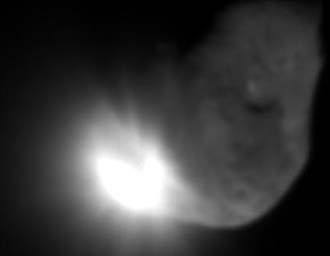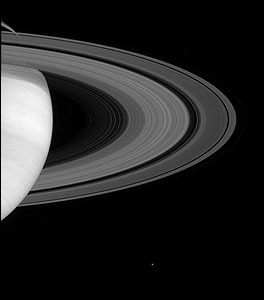Last week, NASA and ESA’s Cassini-Huygens spacecraft crossed Saturn’s rings and entered the planet’s orbit. It is now sending us the most captivating and delightful images.
Cassini-Huygens is going to fly by the moon Titan in October. Then, the Huygens probe will separate from the Cassini spacecraft and attempt a landing on Titan’s surface, scheduled for January 14, 2005. Cassini-Huygens was launched in 1997. NRP has a very nice collection of pictures of the rings and the tiny moon Phoebe. Many people link to the NASA site; but don’t forget ESA, who built the Hugens component: they have the newest pictures, too, and even Real Media streaming video coverage of the Saturn approach in four parts. (Linux users don’t need the proprietary Real Player; xine handles the videos perfectly well.)
When I was a student many years ago, I learnt from a Dutch-speaking friend that the 17th-century astronomer Christiaan Huygens’s name is pronounced /’hœj.xəns/ (I don’t speak Dutch, so I can only hope I got the IPA transcription right). Shortly afterwards, I used this pronunciation in an oral seminar presentation. Needless to say, I got a number of questioning looks and even giggles when I explained myself and blushingly reverted to the accepted but wrong form.
Huygens greatly improved the telescope and is credited with the discovery of Titan. Cassini is the Italian-French Astronomer Jean Dominique (born Giovanni Domenico) Cassini. He discovered four of Saturn’s moons and first described the structure of the rings. The Cassini Gap in the rings (the big one in the picture) is named after him.
Image credit: NASA/JPL/Space Science Institute



